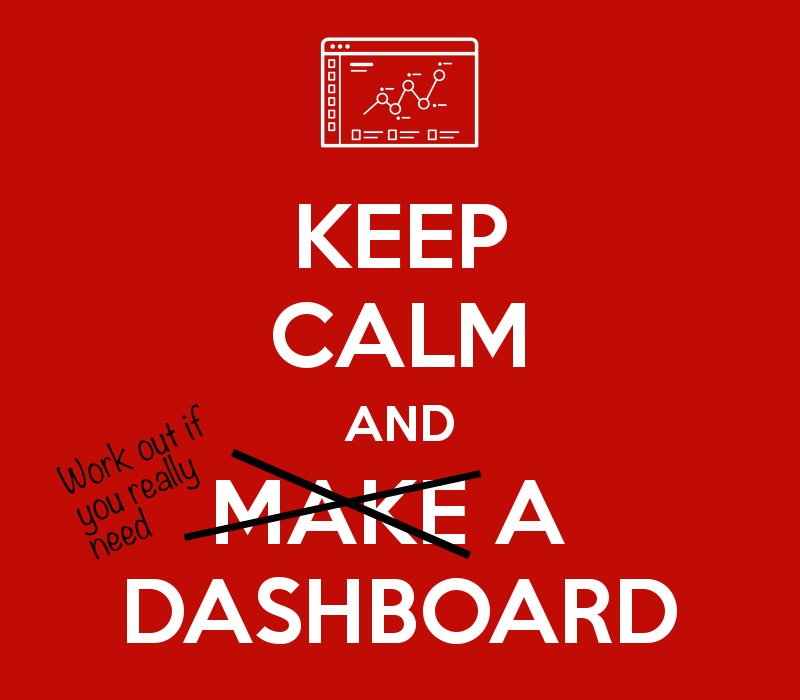
Keep Calm and Make a Dashboard
This is a post about my love-hate relationship with dashboards and why the abuse of the word dashboard leads to upside-down projects. Read to the end and there is also a poem recited by a dragon.
Once upon a time a dashboard was the panel at the front of a vehicle with wheels and dials to let the driver/pilot know whether everything was going as expected and whether they should correct (or panic about) anything.
In modern usage, the word ‘dashboard’ commonly refers to a page on a website which shows data on some indicators you care about and lets you know if there is anything you should be concerned about.
 Photo credits François Rejeté (CC-BY)
Photo credits François Rejeté (CC-BY)
Don’t get me wrong, I love a good dashboard. A good dashboard can save hours of time, money and even lives… They achieve this by eliminating complexity, giving those who need to make a decision the ability to cut through huge amounts of data to get the answers to the questions they frequently pose at the glance of an eye.
But there are lots of bad dashboards and there are lots of things that call themselves dashboards that aren’t really dashboards at all… and people waste a lot of time talking at cross-purposes because of that.
The many-faced-dashboard-god
The context for this post is conversations like the one which follows. These conversations happen relatively routinely, usually at the beginning of a collaboration:
We need a dashboard. Can you get me a project plan and let me know by when you will have it finished?
Spot any issues with this?
If not, let’s look at this another way. Here is a short list of some of the projects I have worked on in the last couple of years. Quiz question: What do they all have in common?
- An alerting system to send out SMS notifications to bosspeople who can get grumpy when bad stuff happens and do something about it
- A workflow management system to manage research submissions from a distributed team of volunteers
- A PDF generator, automating slide-deck reports which used to be produced by hand so that they could be distributed to partners and put on a big screen in an important office.
- A data distribution tool, where data is uploaded in one location and downloaded by partners in other locations
- A feature within a mobile application displaying summary statistics for how many participants were entered into the application on a given day
- A staffing plan for additional temporary support to manually clean and visualise some data in a mapping programme. The visuals were required very quickly and were only going to be relevant for a short period of time.
Answer They all started life by someone asking for a dashboard.
The problem is, that shockingly, there is no universal definition of a ‘dashboard’, or for that matter, ‘alerts’, ‘visualisations’ or even ‘tool’.
Upside-down projects
Dashboards funded by philanthropic money are often a textbook example of what I call upside-down projects.
The reason? The grant proposal says ‘dashboard’ therefore ‘dashboards’ must be built. However, as you have seen from my list above - being asked to build a ‘dashboard’ isn’t super enlightening.
Conclusion
Talk about problems that need to be solved with your technology partner and you are much more likely to cut through a lot of misunderstanding and get the product you want.
 Made with dashboard icon by Buzzyrobot (The Noun Project)
Made with dashboard icon by Buzzyrobot (The Noun Project)
Gratuitous Excerpt from the Reluctant Dragon
Because: Upside-down and childhood associations.
Sweet little upside-down cake
Cares and woes, you’ve got’em
Poor little upside-down cake
Your top is on your bottom
Alas, little upside-down cake
Your troubles never stop
Because, little upside-down cake
Your bottom’s on your top.
